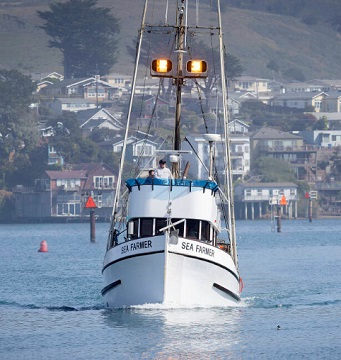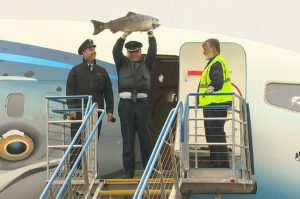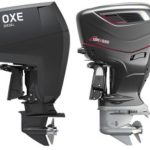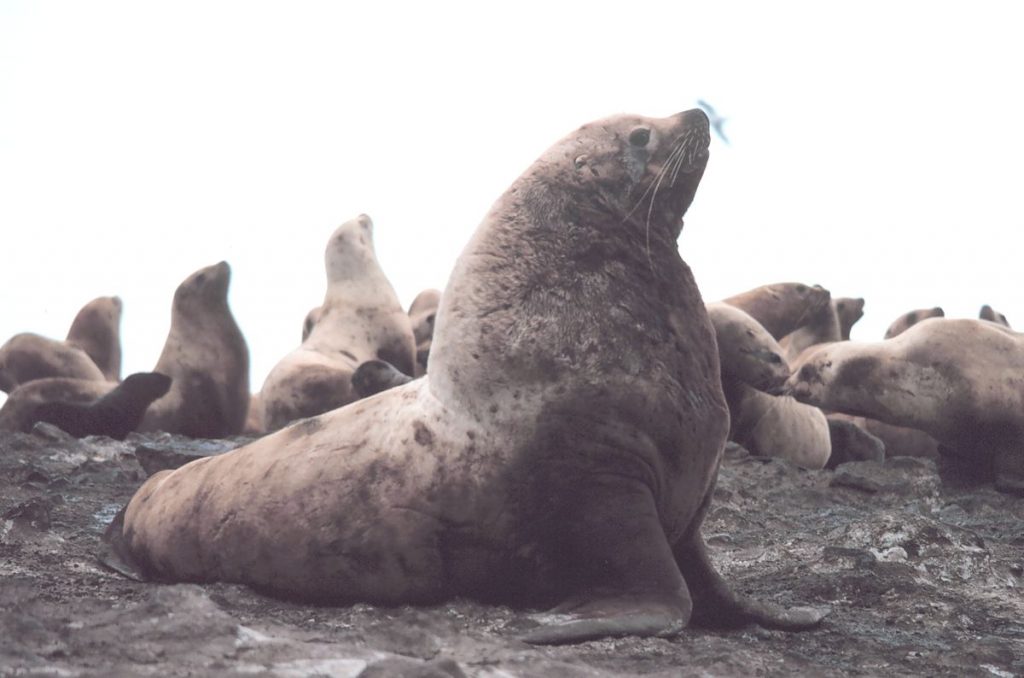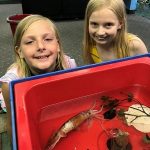Tag Archives: Geoff Shester
California expands test of traps to help delayed Bay Area crabbing season: What this means for crabbers
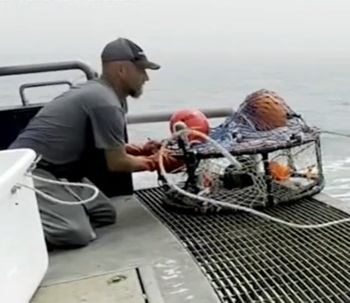 For fisherman Brand Little, the specialized ropes connecting his crab traps are a financial lifeline. The experimental “pop-up” system is designed to prevent whales from getting entangled, by keeping lines on the ocean floor until a crew launches them by remote control to reel in the traps. And thanks to a special testing permit, he’s been able to fish into the spring crabbing season, which was cut-short several years ago to protect the migrating whales. “This is a tipping point, and I can’t stress this enough. This is a tipping point at getting our spring fishery back. It’s been six years. You know, you got to look at where we came from, where we’re at and where we’re headed,” said Brand Little. Video, more, >>CLICK TO READ<< 09:57
For fisherman Brand Little, the specialized ropes connecting his crab traps are a financial lifeline. The experimental “pop-up” system is designed to prevent whales from getting entangled, by keeping lines on the ocean floor until a crew launches them by remote control to reel in the traps. And thanks to a special testing permit, he’s been able to fish into the spring crabbing season, which was cut-short several years ago to protect the migrating whales. “This is a tipping point, and I can’t stress this enough. This is a tipping point at getting our spring fishery back. It’s been six years. You know, you got to look at where we came from, where we’re at and where we’re headed,” said Brand Little. Video, more, >>CLICK TO READ<< 09:57
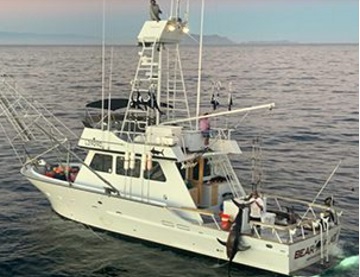
First permits issued for swordfish captains in California
The first commercial fishing permits for the use of deep-set buoy gear in the swordfish fishery in the US state of California were issued by the National Marine Fisheries Service on September 15, marking a significant transition from the large nets that drifted off the West Coast. Gillnets will finally disappear by 2027, replaced mostly by deep-set buoy gear — vertical lines about 150 fathoms long, with a flagpole with a light or radar reflector on top and a bug- and sinker to keep the line anchored vertically. Main lines usually have one to three round hooks with a light attached to shine below the thermocline in 20 to 70 meters (65 to 230 feet) of California water. The gear is designed to be actively maintained, with strike indicators on the surface to alert anglers when a fish is present. >>click to read << 16:23
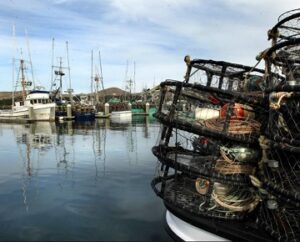
Restrictions lifted on beleaguered North Bay Dungeness crab fleet
The restrictions were imposed earlier this season to reduce the risk of marine animals becoming entangled in gear. Beginning this weekend, commercial crabbers south of Mendocino County can deploy 100% of their allotted crab pots, instead of operating at 50% reduction, as they have for the past two weeks. Extreme weather and rough seas proved an impediment this season, however, as have prices, which so far have kept the commercial fleet north of Sonoma County tied up at dock. Dick Ogg, vice president of the Bodega Bay Fisherman’s Marketing Association, was busy Thursday with his crew prepping gear on a rare clear day so they could try to fish this weekend. >click to read< 07:31
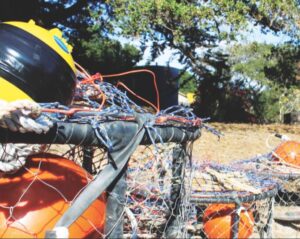
Dungeness Crab Season Could be Delayed Again this Year – The push for pop-up gear systems
This year, according to NMFS data, there have been 16 confirmed whale entanglements along the West Coast through Sept. 30. That includes 10 humpback whales, four gray whales, one fin whale and a minke whale; 11 other reports could not be verified. The vast majority of these reports came from waters along California. The California Dungeness Crab Fishing Gear Working Group, known informally as the Whale Working Group, was created in September 2015 and is made up of industry players, government officials and environmentalists looking for solutions. >click to read< 09:53
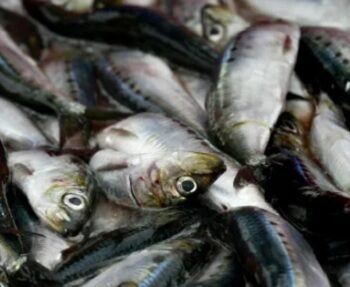
The sardine war hits a lull: Commercial fishing industry lands a victory in Pacific sardine management
The Pacific Fishery Management Council, which oversees fishing of Pacific sardines, voted unanimously in September to maintain the current sardine fishery management process that calls for reassessments after each year’s stock assessments. At the moment, the direct commercial sardine fishery is closed. “Fishery managers have failed to learn from the mistakes of history,” said Geoff Shester, senior scientist at marine conservation group Oceana,,, Diane Pleschner-Steele, executive director of the California Wetfish Producers Association, argues that sardines are not overfished and “the Council’s unanimous decision shows that they understand reality, the big picture.” >click to read< 14:27
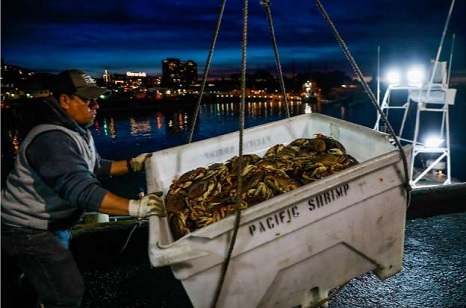
Dungeness crab season might not open for Thanksgiving again
New state regulations may mean that Dungeness crabs won’t be in stores in time for Thanksgiving. The rules, aimed at preventing entanglements “I want to make sure it’s understood what kind of effort we’re putting into it as fishermen and how effective we’ve been,” said Dick Ogg, a Bodega Bay fisherman and a member of the California Dungeness Crab Fishing Gear Working Group that developed the rules. He said that fishermen have worked hard to make sure their gear is set up better to lower risk. “We’ve really reduced our interaction and entanglement rates.” Ogg said there is a lot of anxiety in the fishing fleet about what will happen with the coming season and whether they should start gearing up for a Nov. 15 opening or whether it will be delayed. >click to read< 10:01
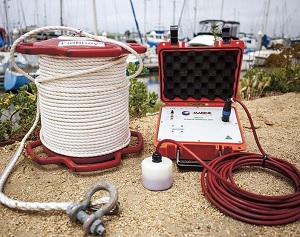
Ropeless gear is not the silver bullet – New technology promises to save the whales by reducing the need for crab fishing lines.
“We are working with fishermen to see what works and what doesn’t and what allows the fisherman to survive economically,” says Geoff Shester, a Monterey-based scientist with nonprofit Ocean. In June, the Ocean Protection Council awarded $500,000 for the testing of pop-up gear in the coming fishing season. The money will pay for five prototypes, including designs by Marina-based Desert Star Systems and Watsonville-based McFarlane Marine Services. The money will also go to fishermen participating in the research. A new crab industry group, California Coast Crab Association, is pushing back. Its president, Ben Platt, described the RAMP regulations as “an existential threat to our livelihoods”,,, >click to read< 08:39
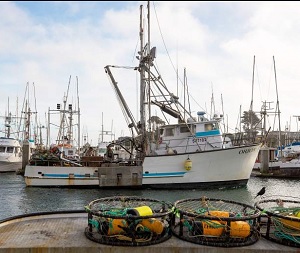
New rules for California Dungeness crab fleet
The California Department of Fish and Wildlife on Friday unveiled a batch of complex new rules designed to reduce the risk to endangered whales and sea turtles of becoming entangled in commercial Dungeness crab fishing gear. The draft regulations are set to be finalized before the next commercial season starts in November after a period of public review. Among the provisions are options to restrict fishing in certain depths, require crabbers to set only a share of the traps for which they’re permitted or limit intervention to any of six newly established geographic zones, rather than the larger Northern and Central California management districts that currently exist. >click to read< 09:14
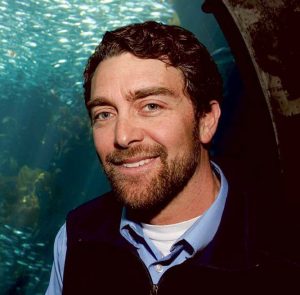
As the Pacific sardine population keeps dropping, the feds come under scrutiny
On April 8, the Pacific Fishery Management Council – a body of appointed officials that regulates fisheries off the West Coast – will be presented with the draft assessment of the sardine population from roughly southern California to Canada. The news it brings is neither good for fishermen nor the local marine ecosystem: The estimated number of sardines in July 2018 – which dictates policy for the 2018-19 fishing year – is 52,065 metric tons, an approximately 97-percent drop from 2006, the most recent peak. What is in dispute: the accuracy of the population assessment, and how we got here.>click to read<15:30
Lawsuit seeks to protect whales, turtles from California gillnets
 Oceana filed a lawsuit seeking to force U.S. fisheries managers to implement plans for restricting the number of whales and turtles permitted to be inadvertently snared in drift gillnets used for catching swordfish off California’s coast. The proposed rule, endorsed in 2015 by the Pacific Fishery Management Council, would place numerical limits on “bycatch” of whales and other marine creatures, and suspend swordfish gillnet operations if any of the caps are exceeded. The regulation was expected to gain final approval from the National Marine Fisheries Service. But it was withdrawn last month after the Commerce Department agency determined the cost to the commercial fishing industry outweighed conservation benefits, agency spokesman Michael Milstein said on Thursday. click here to read the story 17:11 Geoff Shester, a senior scientist at Oceana, who was “furious” when he found out the National Oceanic and Atmospheric Administration (NOAA) had decided to against adopting the rule. (lmao!) click here to read 17:13
Oceana filed a lawsuit seeking to force U.S. fisheries managers to implement plans for restricting the number of whales and turtles permitted to be inadvertently snared in drift gillnets used for catching swordfish off California’s coast. The proposed rule, endorsed in 2015 by the Pacific Fishery Management Council, would place numerical limits on “bycatch” of whales and other marine creatures, and suspend swordfish gillnet operations if any of the caps are exceeded. The regulation was expected to gain final approval from the National Marine Fisheries Service. But it was withdrawn last month after the Commerce Department agency determined the cost to the commercial fishing industry outweighed conservation benefits, agency spokesman Michael Milstein said on Thursday. click here to read the story 17:11 Geoff Shester, a senior scientist at Oceana, who was “furious” when he found out the National Oceanic and Atmospheric Administration (NOAA) had decided to against adopting the rule. (lmao!) click here to read 17:13
Pacific sardine population remains low, says National Marine Fisheries Service
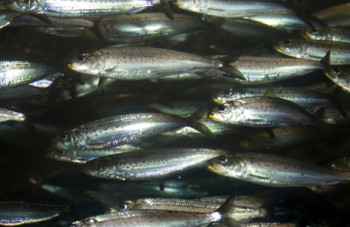 A study released Friday by the National Marine Fisheries Service puts the northern Pacific sardine population off the West Coast at perilously low levels for the third straight year. The findings, which will be reviewed next month by The Pacific Fishery Management Council, while disheartening for both environmentalists and fishermen, are also disputed by some in the fishing industry who question the method by which these forage fish are counted.,, But Diane Pleschner-Steele, who is the executive director of the California Wetfish Producers Association and represents the majority of boat fishermen and processors who harvest wetfish, said that there’s significant error in the way the sardines are counted and that current government surveys are not surveying adequately the fish that are in the near shore ocean. “Closing the sardine fishery basically closes everything for us, except for squid,” said Pleschner-Steele. “We are seriously considering applying for disaster relief.” read the article here 09:26:19
A study released Friday by the National Marine Fisheries Service puts the northern Pacific sardine population off the West Coast at perilously low levels for the third straight year. The findings, which will be reviewed next month by The Pacific Fishery Management Council, while disheartening for both environmentalists and fishermen, are also disputed by some in the fishing industry who question the method by which these forage fish are counted.,, But Diane Pleschner-Steele, who is the executive director of the California Wetfish Producers Association and represents the majority of boat fishermen and processors who harvest wetfish, said that there’s significant error in the way the sardines are counted and that current government surveys are not surveying adequately the fish that are in the near shore ocean. “Closing the sardine fishery basically closes everything for us, except for squid,” said Pleschner-Steele. “We are seriously considering applying for disaster relief.” read the article here 09:26:19
What’s eating at Dr. Ray Hilborn today?!! Dr. Geoff Shester from Oceana
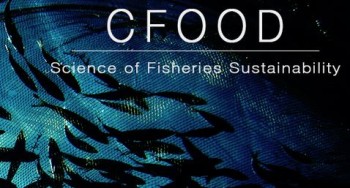 Last week Dr. Geoff Shester, California campaign director for the nonprofit advocacy group Oceana criticized the Pacific Fishery Management Council for the persistence of low numbers of California Sardines. The lack of a population recovery may cause the commercial moratorium to last until 2017. The author explained this sardine population decline as being 93 percent less than it was in 2007. Dr. Shester does not believe this is because of environmental causes like climate change, El Nino, or natural fluctuations in forage fish species however – instead he blames the management body. “They warned of a population collapse and the fishery management body basically turned a blind eye and continued moving forward with business as usual.” Response Comment by Ray Hilborn, University of Washington, Read the rest here 11:49
Last week Dr. Geoff Shester, California campaign director for the nonprofit advocacy group Oceana criticized the Pacific Fishery Management Council for the persistence of low numbers of California Sardines. The lack of a population recovery may cause the commercial moratorium to last until 2017. The author explained this sardine population decline as being 93 percent less than it was in 2007. Dr. Shester does not believe this is because of environmental causes like climate change, El Nino, or natural fluctuations in forage fish species however – instead he blames the management body. “They warned of a population collapse and the fishery management body basically turned a blind eye and continued moving forward with business as usual.” Response Comment by Ray Hilborn, University of Washington, Read the rest here 11:49
Oceana blame’s sardine overfishing, not just warmer waters, for sea lion deaths.
 But marine conservation nonprofit Oceana, which has a California office in Monterey’s Heritage Harbor, connects another dot to the scarcity of sea lion food: sardine fishing. The Pacific Coast sardine population is at its lowest level in 15 years, Oceana reports. “Any fishing on Pacific sardine right now is overfishing,” said Geoff Shester, Oceana California campaign director. “While federal officials are quick to blame ocean conditions for the declines in [sea lion] prey, they have turned a blind eye to the effects of sardine fishing,,, Read the rest here 07:44
But marine conservation nonprofit Oceana, which has a California office in Monterey’s Heritage Harbor, connects another dot to the scarcity of sea lion food: sardine fishing. The Pacific Coast sardine population is at its lowest level in 15 years, Oceana reports. “Any fishing on Pacific sardine right now is overfishing,” said Geoff Shester, Oceana California campaign director. “While federal officials are quick to blame ocean conditions for the declines in [sea lion] prey, they have turned a blind eye to the effects of sardine fishing,,, Read the rest here 07:44






